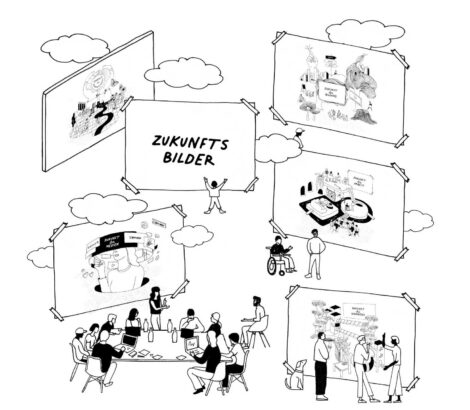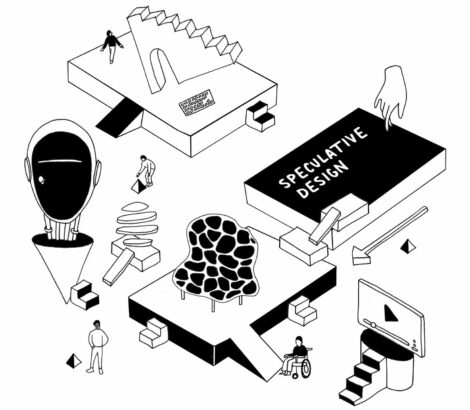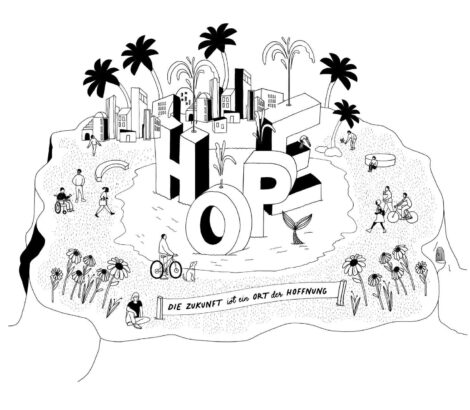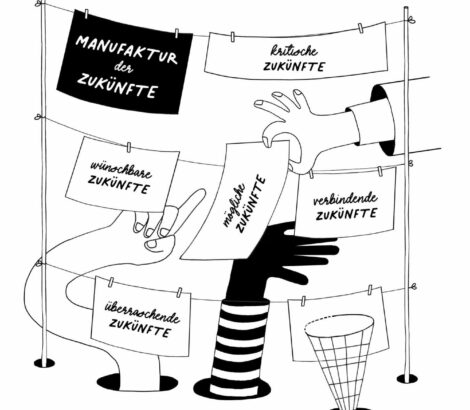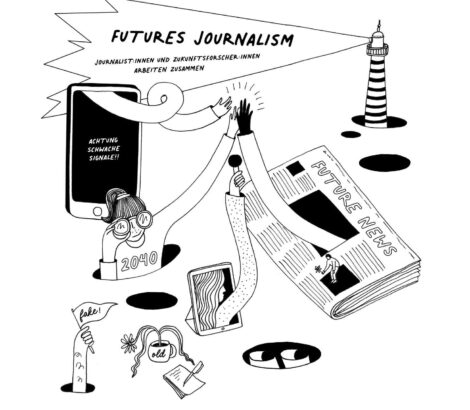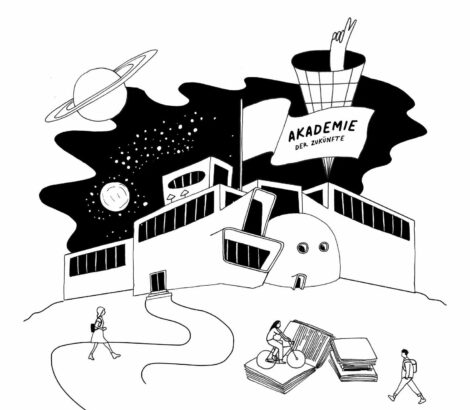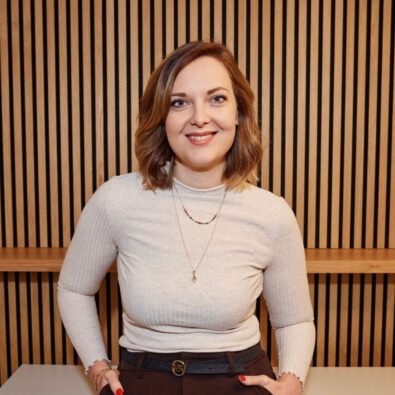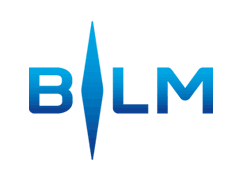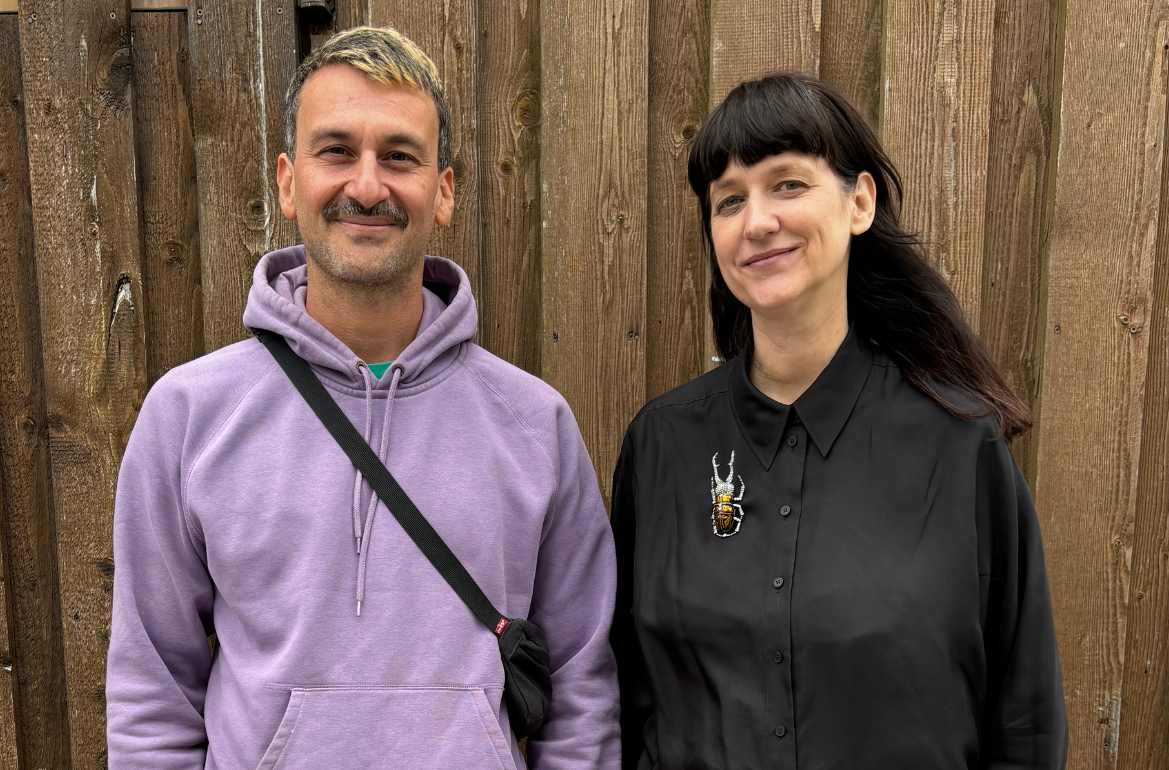
shape of new: “The Future Should Become a Place of Hope”
Many people would like to take a look into the future through a crystal ball. But this is impossible – not only because no one can see clairvoyantly, but also because there is no such thing as a predetermined future. With their agency shape of new, Simone Engelhardt and Rubén Granados Hughes from Munich help companies and institutions to become fit for the future. In this interview, they reveal how a rethink can work and how we can actively shape the future.
Simone, Ruben, you call your company a futurology agency. What does that mean?
Simone: We deal with everything that revolves around the topic of futures. We say futures on purpose, because there is no one prescribed future, but many possibilities for shaping the future.
Ruben: In our work, we think about everything in terms of the future. We always think first: what does the state we want to achieve look like? This is our approach and our guiding principle in everything we do.
„Futures Journalism“: How a new kind of journalism could report on the future
How can we imagine your work in concrete terms?
Simone: There are various fields that we are focusing on. On the one hand, we want to be a manufacturer of the future. In other words, we want to shape the future using different methods that we adapt individually to our customers. On the other hand, we also want to be an academy for futures, i.e. we want to encourage people to shape the future themselves and develop positive visions for the future. There are so many negative visions of the future constantly circling around us – we want to motivate people to think differently. Another field is “Futures Journalism”. Here we are looking at how a new kind of journalism could report on the future. Journalistic media are very much concerned with the present, but we believe that they should also present different future scenarios and use them to engage people. We call our fourth area “Speculative Design”. We try to develop new perspectives here, to connect things that are not normally associated with each other. For example, time pressure and wild animals. These two topics don't seem to have much to do with each other at first, but we look at them: What can we learn from wild animals to better deal with our social understanding of time in the future?
Ruben: Our “Speculative Design” area is a process in which we actually design objects with our customers – with the idea that they are also designing their own future. In this way, we get people interacting and thinking. In this way, a future as an abstract concept becomes something tangible.
So you want to encourage people to think about the future in various ways. How exactly does this help your customers?
Ruben: We work with them to create visions of the future, taking current developments into account. In this way, we want to discover emerging trends before they really take off. They can be a basis for thinking further into the future and seeing whether they can lead to a desirable outcome. This allows future strategies to be derived and possible directions in which the company could transform itself to be identified. We always want to draw attention to the fact that everyone carries certain images of the future around with them, which are often negatively influenced by dystopias in films or series. We try to convey alternative and hopeful images of the future to our customers. It is important to us that the future is seen as a space of possibility.
Who do you work with specifically, who are your clients?
Simone: Many media companies turn to us, but also public and political institutions. Above all, we work with departments where a lot is changing, such as HR development or people who support transformation processes within a company.
You both describe yourselves as futurists. What fascinates you about the future?
Simone: When you engage with different futurology methods, a whole new space opens up. You get out of linear thinking. There are suddenly so many new possibilities when you start to think visionarily and not just step by step. This gives you the chance to shape a different and sustainable future
Ruben: What fascinates me so much about the future is the philosophical approach: the future does not exist in reality, it is created in our heads. We construct it. When you realize that we can influence the future ourselves, you suddenly have so much power and really start to think about what you actually want the future to look like.
When linear thinking stops, uncertainty sets in
What are the reactions to your ideas and thoughts?
Ruben: They are usually very similar. We always approach the topic quite systematically: first, we look at the current situation and then move our thoughts further and further towards the future. At some point, we reach the point where we think in terms of the future. Then we abandon linear thinking and uncertainty comes into play. Most people then find it very difficult and initially think against a wall. But at some point they break through and start to use their imagination to picture what could be. That's the magic moment – when we realize that people suddenly imagine things that they wouldn't normally have thought of because they are usually only concerned with the problems of the present.
In which of your projects has this process been particularly successful?
Ruben: We are currently advising and supporting a social institution. We started by gathering a lot of information about the status quo, possible trends and wishes. We then poured this information into various future scenarios. In other words, we imagined all possible paths into the future, considered what could happen if this or that factor changed, or what could happen if certain topics were ignored. That's how we learn: What things should not be left under the table? What potential is there in the project? The individual desirable futures result in an overall vision that the institution can now work towards.
Simone: We talk a lot about how to achieve this vision. It's also about narrative things – how do you communicate the ideas to the employees and take them with you on the journey? How can we make the new vision of the future tangible and accessible so that everyone wants to work towards it?
You also deal with the topic of “Futures Journalism”. What exactly are you looking at?
Simone: We want to openly examine how journalism is currently dealing with futures. There are a few formats that deal with the topic in different ways. But the question is: How can we approach this methodically and with structure with the help of futurology? We want to look at two sides. On the one hand: How does journalism report on the future? And secondly: How would journalism have to change or be rethought in order to create this space in the first place? What new roles would be needed to make future-oriented reporting possible? Would the role of a narrative visionary or a future news desk be an idea?
Ruben: Many journalistic financing models no longer work at all. This is another topic that we want to include in our research.
Financing in journalism: No answers, but food for thought
How journalism can be financed in the future has long been a topic in the media houses. Have you already found new approaches or even solutions?
Simone: It would be foolhardy to claim that we have the answers – nobody does. The most we can do is come up with buzzwords and provide food for thought. Studies clearly show, for example, that many people can be expected to do more than is currently being done. More complexity, more positivity, more inspiration, more ability to act. Journalistic media could make much more use of this. Another idea would be for local media in particular to go out much more in their region, talk to people and perhaps even shape the future together with them. There's a lot of potential there.
Ruben: Ultimately, it's about finding individual solutions. When we work with media companies, we look at what makes the medium special, what its strengths and weaknesses are and what the users' needs are. This then determines the direction in which we can move. Generally speaking, you can only say that you have to move in order to be fit for the future.
If you had to give three tips to help companies become more future-proof, what would they be?
Simone: Firstly, deal with the future and make it a topic in day-to-day business – that's the most important thing, because there is usually a lack of freedom to do so. Secondly, incorporate future-oriented thinking into the training and development of employees.
Ruben: And learning to accept and appreciate complexity and uncertainty and not being afraid of complex thinking. Only then will you be able to think outside the box and develop visions of the future.
Many people find it difficult to break out of their habits and try something new. Why is that the case?
Ruben: People usually don't have an intrinsic desire to change. It is often pressure from outside that motivates us to do so – environmental influences change and we have to react to them.
Simone: But individual character also plays an important role. There are people who like change and always want to see something new. And then there are people who prefer stability. The ideal thing is to bring these people together: those who think in a visionary way and the others who can absorb big ideas.
Let's venture a final outlook: What future would you like to see in ten years' time?
Simone: I think it's important that we as a society manage to talk about visions and futures. That we as companies or individuals can communicate where we want to go so that we can then formulate shared visions and work together. No one person can shape the future alone, but together we can do it.
Ruben: I would like to see society become better at dealing with complexity. Unfortunately, the development of public discourse is increasingly leading to the formation of two camps on a polarizing topic; there is either black or white. But the world is complex and, above all, often extremely contradictory. If we remind ourselves of this, it would help us a lot. And secondly: How nice would it be if we had a vision for the future of our society? We don't have one at the moment, and politicians are only reacting to current problems. I would like to see a vision of the future formulated in which everyone can see themselves and say: that's where I see myself, that's the future I want to move into.
Bannerbild: Photo: Czerny

